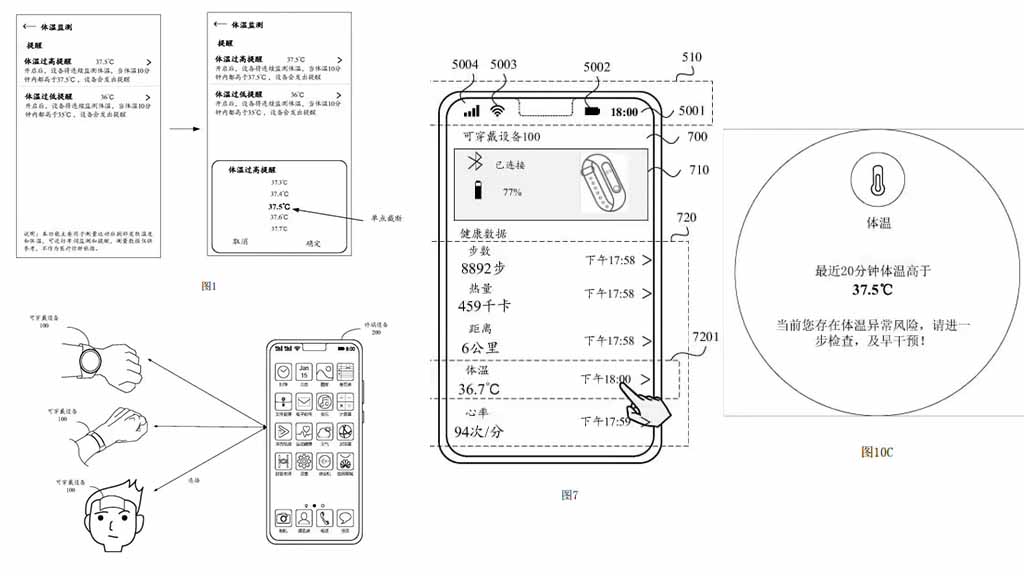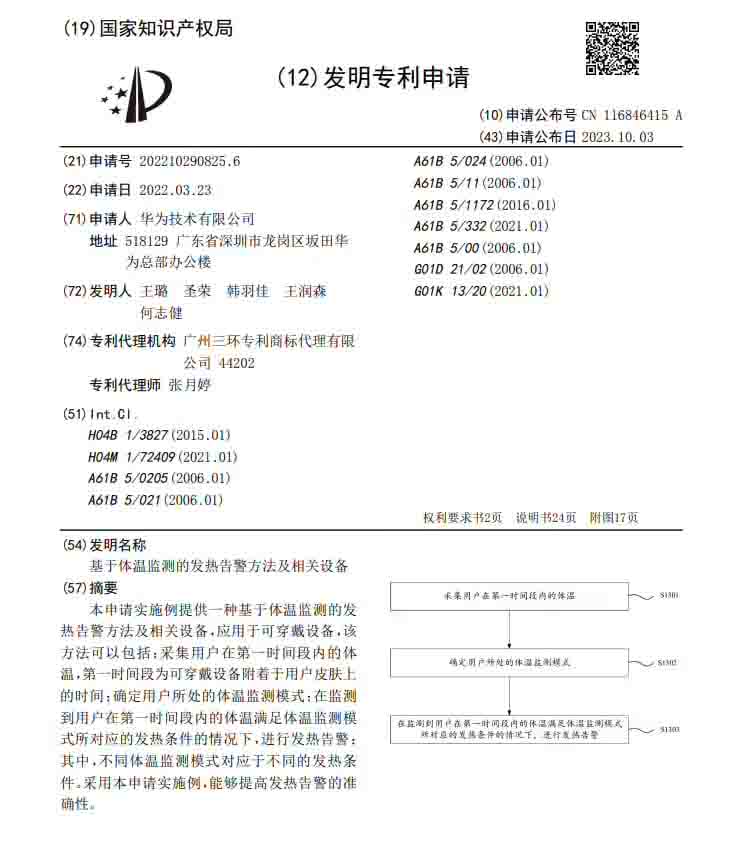Huawei
Huawei has ‘Fever Alarm’ feature for smartwatches using body temperature sensor

Huawei recently filed an innovative patent for the Fever Alarm feature for smartwatches. The company filed this technology patent with application number 116846515 on March 23, 2022, and was approved on October 3, 2023, by China’s CNIPO.
The fever alarm patented technology is built around Huawei smartwatches and smart wrist wearables. The device with this technology can record body temperature while it is connected to the wrist of the user.
Thereafter, It will use the temperature sensor in the smartwatch to determine the body temperature and match the readings with the pre-built body temperature situation to show the results or trigger an alarm.

The current temperature measurement equipment including electric thermometers and ear thermometers can only measure the user’s body temperature once. These are designed around a single time-time use case scenario. Thus you can’t use them to keep a record of your body temperature readings continuously.
Therefore, a smartwatch could help to manage the body temperatures more effectively. However, it also has a challenge that the tech used in most of the smartwatches can’t guarantee accuracy. But, Huawei’s method of collecting the user’s body temperature is something entirely designed for smartwatches and similar types of smart wearables.
Because, Huawei’s technology has temperature rating management, a dedicated algorithm, and even a false temperature and low-danger alarm system. It could suggest the user keep precautions in an unfriendly environment and keep the user ready for all types of weather.

Different UI:
The screenshots in the patent show a dedicated app section or UI to manage all of the body temperature-related data in one place. The UI and on-screen options appear to be more customizable for different screen sizes such as smartwatches and smart bands. You can choose to set a temperature, which will trigger an alarm when the smartwatch actually detects rising/falling temperature.
For now, Huawei has not announced to put this technology in production but we want to see it in action soon or later.






